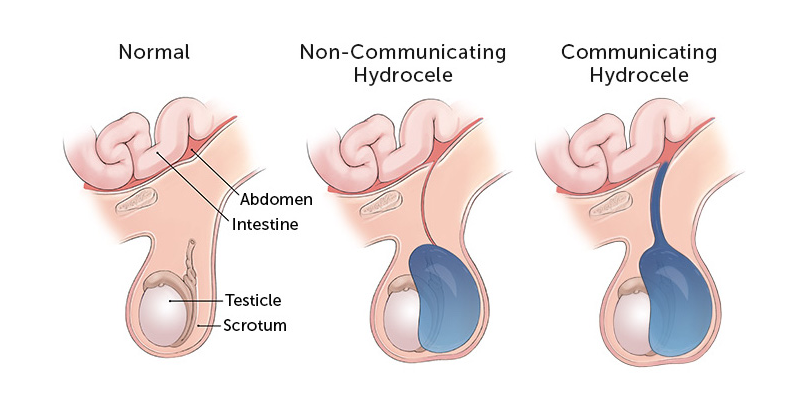Hydrocele | Diagnosis & Treatments
How is a hydrocele diagnosed?
Your son's doctor will likely notice the scrotum is swollen. Often, the testicle can't be felt because of the fluid surrounding it.
A hydrocele can then be easily diagnosed by shining a light through the scrotum. If the scrotum is full of fluid, it will light up. Occasionally, the doctor may want to perform an ultrasound to confirm the diagnosis and check the testis on the side suspected of having a hydrocele.
What are the treatment options for a hydrocele?
Young children
Closed hydroceles usually go away with time in infants. If the hydrocele has not disappeared by the time your son turns 1 or becomes very large, he may need surgery. Communicating hydroceles persisting for more than a year generally require surgery to prevent future complications.
You will see both the surgeon and the anesthesiologist before the operation on the day of surgery. Your son will receive general anesthesia, so he will feel no pain.
A small incision is made in the groin, and the surgeon empties the fluid from the sac and then removes the channel, connecting the abdominal cavity to the scrotum. The muscle wall is reinforced with stitches.
Teenage boys
Teenage boys with adult-type hydroceles have surgical repair performed through an incision in the scrotum. The surgical site is typically protected for a few days with a supporter and gauze dressings.
Most children go home the same day as the operation. However, some spend a night in the hospital for observation. After surgery, your son will stay in the recovery room until he is ready to go home. Parents are welcome to stay with their children in the recovery room.
What care is needed following surgery?
The nurse in the recovery room will show you how to care for your son at home. He or she will also give you written instructions. Most children have some pain after surgery, so your child's doctor may prescribe some pain medicine.
There are usually no stitches to remove. The stitches are under the skin and dissolve on their own. A clear, waterproof bandage will cover the incision in the groin area.
Your son may shower or have a sponge bath at home but avoid a tub bath or swimming until seven days after surgery. Your son should not use straddle toys or bicycles, play sports, or go to gym class for three weeks after surgery.
The doctor will want to see your son about two weeks after the surgery to check how the area is healing.


